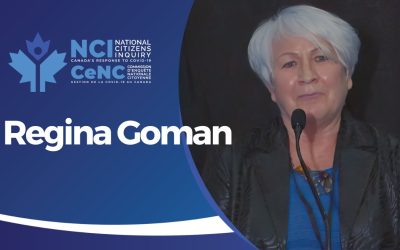Outlining in Perth today a five-point plan to fight inflation, the Prime Minister will set a new target for the budget surplus of 1.5per cent of the nation’s gross domestic product.
The move follows the Howard government’s pledge made during the election campaign to maintain a budget surplus of 1 per cent of GDP.
Mr Rudd will also flag new policies to create “real incentives” for private saving. He did not elaborate on the measures yesterday at a “community cabinet” session in Perth during which he and his ministers took questions from the public, but the reforms could include policies to encourage superannuation and savings plans to promote home ownership.
These measures would have the potential to take pressure off home interest rates by slowing the surging pace of consumer and business spending that has the Reserve Bank worried.
Blaming the Howard government for failing to tackle inflation, Mr Rudd will also warn of new spending cuts to be unveiled in the May budget, beyond the $10 billion savings plan outlined in last year’s election campaign.
However, the Prime Minister yesterday signalled that he remained committed to delivering tax cuts of more than $30 billion, and warned the current tax system was “too complex” and served only the interests of accountants.
“The future of the national economy is core business for the new Government of Australia,” Mr Rudd will say in his speech today. “We are embarking on a hardline approach to fiscal discipline – aiming for a budget surplus of at least 1.5 per cent of GDP in 2008-09, provided growth prospects remain as currently anticipated.
“This is higher than the target outlined by the previous government as recently as November.
“It won’t be easy. In going to the election we announced $10billion in savings over the forward estimates. We will be looking to make savings beyond that through our razor gang.”
Mr Rudd, who proclaimed himself an “economic conservative” during the election campaign, had previously pledged to maintain a budget surplus of 1 per cent of GDP.
But with Wayne Swan warning on Friday that inflation was likely to remain at or above the Reserve Bank’s target of 3 per cent over the next 18 months – and the shockwaves of the sub-prime credit crisis buffeting consumer confidence and the Australian share market – the Rudd Government is determined to act.
The second edict of Mr Rudd’s five-point plan, after setting the budget surplus target, is to examine “all options to provide real incentive to encourage private savings”.
The third priority is new policies to tackle the chronic skills shortage.
Mr Rudd will also argue that the Government must provide national leadership to tackle infrastructure bottlenecks.
Finally, the Government will aim to deliver “practical ways of helping people re-enter the workforce and removing disincentives to working hard – to lift workforce participation”.
In his speech, Mr Rudd will argue Australia faces conflicting economic currents including “a global economy (led by the US), which appears to be slowing, an ongoing terms-of-trade boom driven by Asia-Pacific economies and significant domestic inflationary pressures at home”.
He will warn that the inflation challenge Australia faces “is very much the Liberals’ parting gift to the Australian economy”. And he will mock Mr Costello’s election claim that “inflation is right where we want it”.
“A decade of neglect of the twin investment deficits in infrastructure and skills has meant our economy has been ill-prepared to deal with the demand surge flowing from the terms-of-trade boom,” Mr Rudd will say.
“The inflation problem we currently face has not emerged overnight. It cannot be solved overnight. But we can start immediately. And we have.”
Australia’s current gross domestic product, a measure of national income, including wages and profits, is about $1.1trillion. This suggests the Rudd Government, on current settings, would unveil a first budget surplus of between $16 billion and $18 billion.
Peter Costello announced in his final budget last May a forecast of an underlying cash surplus of $12.7 billion. This was updated in the Mid-Year Economic Forecast Outlook released during the election campaign to show a surplus of $14.4 billion, which is about 1.25per cent of GDP.
John Howard later predicted the budget surplus could be 50 per cent higher than the $14.4 billion forecast. “Budget papers show that in the last three fiscal years, the final surplus has been at least 1.5 per cent of GDP, or 50 per cent higher than the 1per cent figure projected in the original budget forecasts for each year,” the then prime minister said in November.
If this trend continues, the Rudd Government will comfortably achieve its new target of a surplus of 1.5 per cent of GDP.
Mr Rudd, who toured flood-stricken towns in Queensland early yesterday, later jetted to Perth to join his ministers in meeting voters at the Canning Vale College. Pledging a more open style of government that would “listen” to the community, he answered questions from the floor during the “community cabinet” session.
Grilled on the tax system, he pledged fundamental reform. Mr Rudd said he understood the tax system needed to be simplified and vowed to “get the balance right”.
The Treasurer told the meeting the Government was committed to tax reform but admitted “it will take time”.
“There is no magic pudding out there,” Mr Swan said.
Opposition treasury spokesman Malcolm Turnbull said Mr Rudd’s speech was a classic case of “Rudd spin” as opposed to “real substance”.
He said the Pre-Election Financial Outlook that was released before the November election showed the budget surplus was estimated to be 1.3 per cent of GDP this year and 1.1 per cent for the following year.
“Those estimates are always very conservative,” Mr Turnbull told the Fairfax Radio Network today.
“Even if Kevin Rudd were to make absolutely no spending cuts and essentially leave everything in the status-quo situation you would have a budget surplus of 1.5 per cent or better this financial year anyway.
“He knows that.
“What he is really doing is trying to claim credit for what is going to happen anyway, for the good strong surpluses that the good economic management that John Howard and Peter Costello delivered over 11-and-a-half years.”


